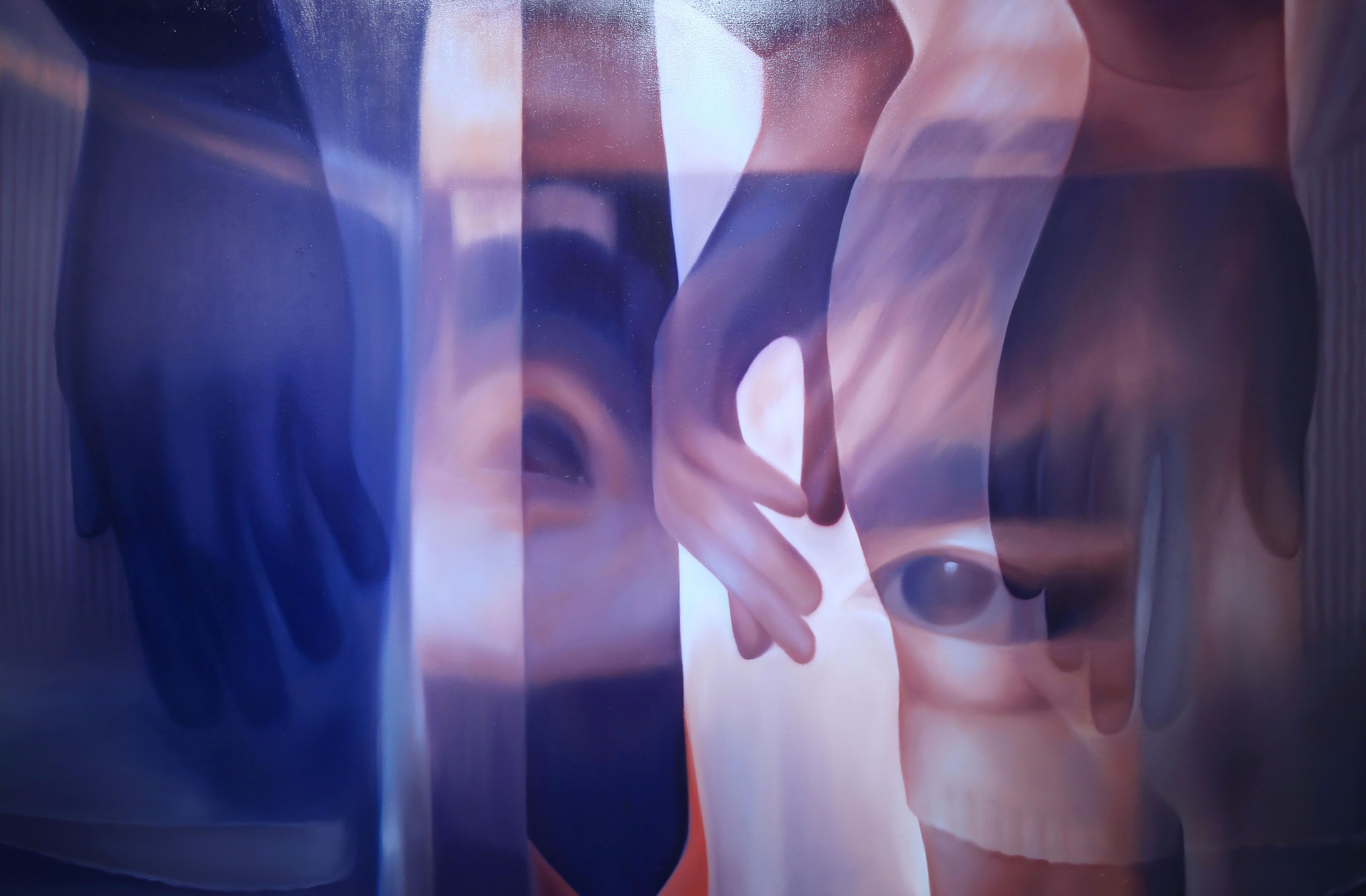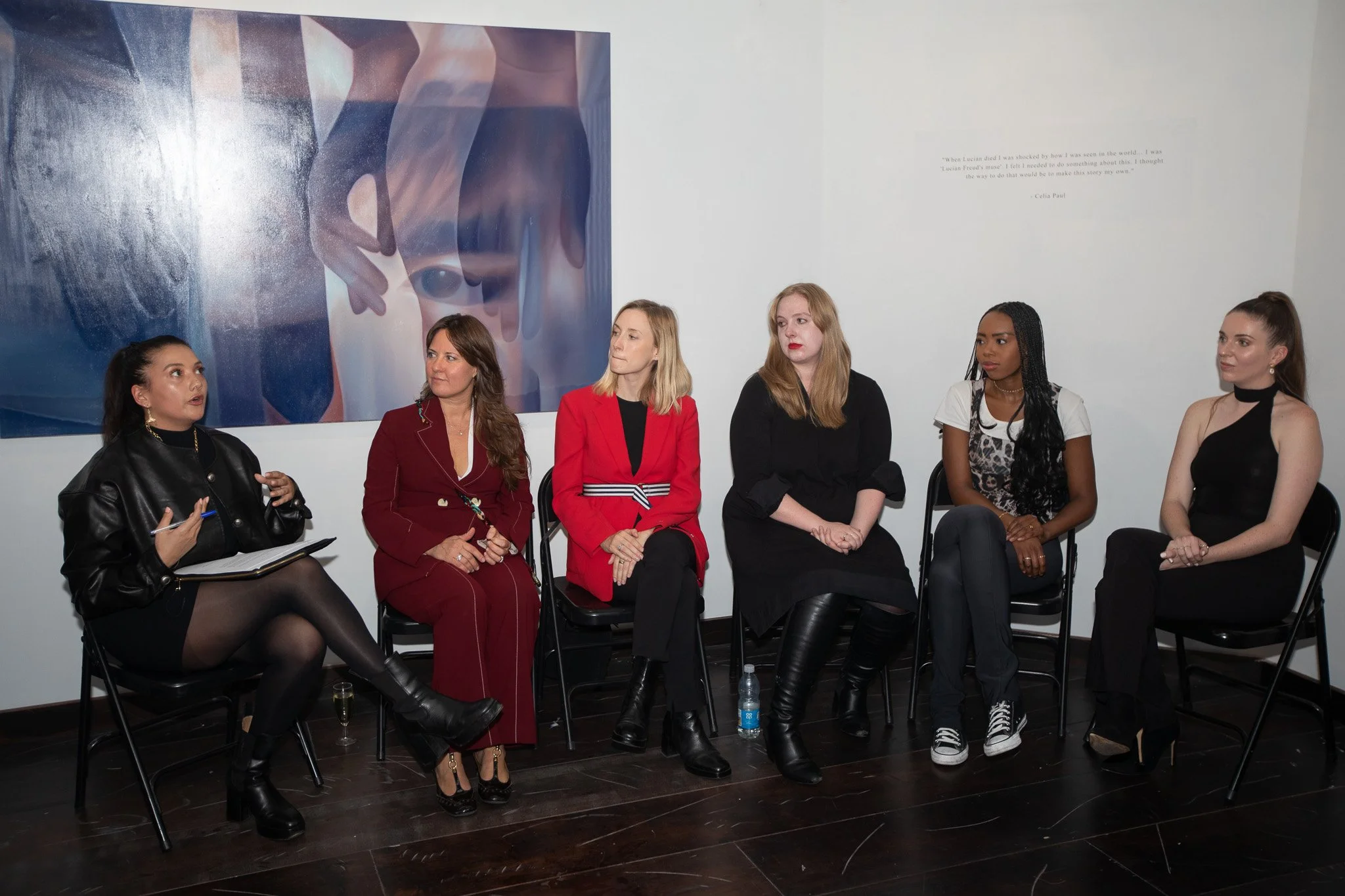
‘When Lucian died I was shocked by how I was seen in the world... I was 'Lucian Freud's muse'. I felt I needed to do something about this. I thought the way to do that would be to make this story my own.’ - Celia Paul
Underground Muse: From Muse to Artist
Exhibition Text:
Underground Muse features six female artists who are all part of the artist collective, Fé. Responding to the theme, moving from muse to artist, the exhibition explores the challenges female artists face in the art world and celebrates the female collaboration and time shared together over the past year through life drawing, studio visits, critiques, dinners, and artist retreats.
Historically, the muse has been presented as a passive model possessed by a great male artist. Initially conceptualised as nine ancient Greek goddesses who inspired science, literature, and the arts, a Muse is now more widely known as an idealised and attractive young woman who provides inspiration and allure.
This exhibition tackles the problematic tradition where male artists could define the female Muse, limiting their role to sheer inspiration. By reclaiming the original meaning of the Muse, this exhibition scopes out a space for female artists to proclaim their narratives and share their lived experiences.
Underground Muse marks the collective's first exhibition and is part of the initiative's research-led programme to start conversations on the importance of female collaboration and how we can best support contemporary female artists.
The Matter of The Muse: Reclaiming our narrative
The concept of the muse has evolved from an inner source of inspiration, as seen in ancient Greek poet Homer's works, to a sexualised, passive figure possessed by male artists. The classical relationship between the artist and his muse reflects a patriarchal structure, where a male protagonist carries out the creative act, while the female role is confined to supporting this process. Male artists have historically dominated the telling of female narratives in art. For centuries, women have been depicted through the lens of male artists, who often used them as muses, resulting in a skewed representation of women's experiences. John Berger critiques how visual culture often portrays women as objects of the male gaze, emphasising their role as muses defined by male artists and the viewer rather than by themselves. This portrayal restricts women to passive and aesthetic roles that have reinforced power dynamics in both art and society. Consequently, significant portions of art history have been overlooked, with the contributions and perspectives of female artists largely excluded.
Susanna and the Elders (circa 1610) by Artemisia Gentileschi highlights the importance of female perspectives in art. The work depicts the Old Testament story of Susanna, who was sexually assaulted by two elders and sentenced to death for adultery. Gentileschi's portrayal of Susanna offers a poignant reflection on the trauma and injustice she endured. It underscores the unique perspective of a female artist in depicting this narrative, which could have been approached differently by a male artist. Women's voices and lived experiences were seen as less important to society, a concept Judy Chicago has challenged through the iconic Womanhouse (1972) installation. Here, she demonstrates that female experience could be as much a pathway to universal human experience as male experiences have been for centuries. Underground Muse presents contemporary female artists' works depicting their thoughts, dreams, and lived experiences, echoing Frida Kahlo's famous declaration, "I am my own muse," as they claim their image and draw creative inspiration from their own lives.
In-Conversation: The Matter of The Muse
As part of the research lead initiative, the exhibition hosted a dynamic conversation between leading voices in the art market: Sotheby’s Aleksandra Ziemiszewska and Alina Davey, Artsy’s Adeola Elizabeth Gay, writer and curator Ruth O'Sullivan, and artist Lydia Smith, moderated by Artnet’s Lydia Higton. Sharing powerful insights from their journeys as female leaders, they tackled pressing issues around the barriers facing women artists and offered inspiring pathways for change.










